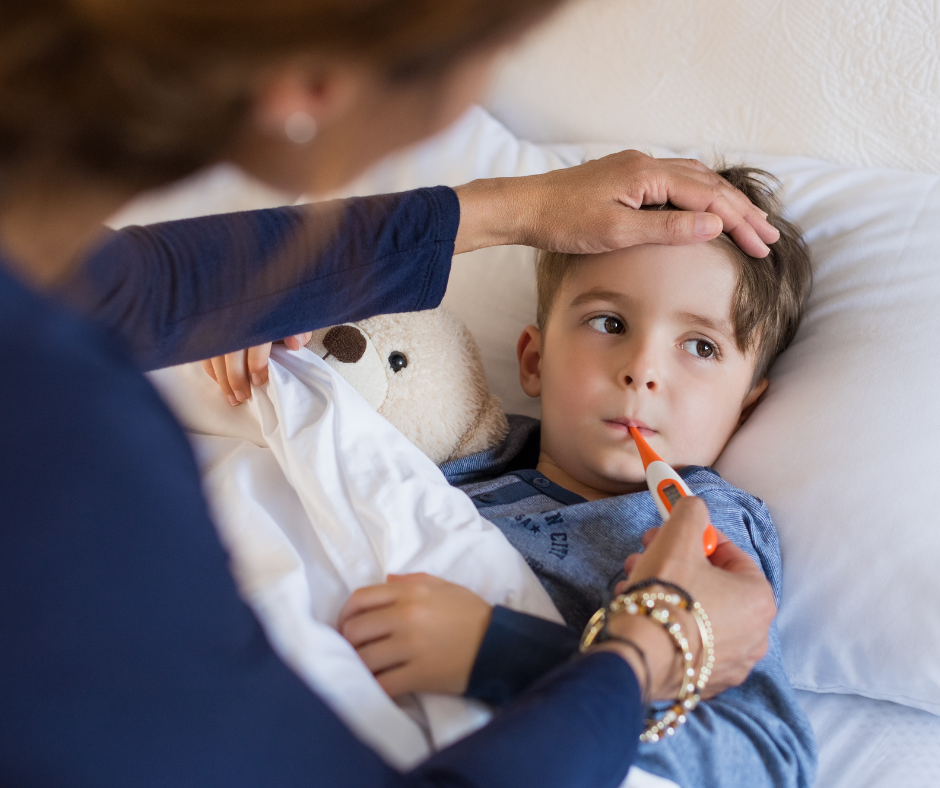Amid cold and flu season, and COVID-19 testing and quarantine scenarios at school, it’s more essential than ever to have a thermometer in your home first-aid kit.
When your kiddo is sick or if they’ve been exposed to something, you should keep tabs on their temperature whether they show signs of fever or not. If their fever does spike, an accurate tracking of their temperature is key information when you talk with a medical provider.
From heat sensors to infrared scanners to forehead swipes, there are loads of thermometers on the market. Make sure you choose and use the one that’s right for your child.
What are the different types of thermometers?
When choosing a thermometer, there are three options to consider:
- Digital thermometers use electronic heat sensors to record body temperature. They are the most basic and common types of thermometers, and probably the most accurate. Digital thermometers can be used in the mouth, rectum or armpit.
- Digital ear thermometers use an infrared scanner to measure the temperature inside the ear canal. If your child has earwax or a small, curved ear canal, a digital ear thermometer may not provide an accurate reading.
- Temporal artery thermometers are placed on the temporal artery of the forehead and measure the infrared heat. Forehead thermometers may not be as reliable as digital thermometers and are usually more expensive.
Are there thermometers I shouldn’t use?
Not all thermometers are created equal. Here are some that should be avoided:
- Digital pacifier thermometers. Digital pacifiers can’t be used for infants younger than 3 months, and they may be unreliable for older infants and toddlers. To work properly, the pacifier needs to be in your child’s mouth for several minutes without moving. That’s probably not going to happen.
- Fever strips. Stick thermometers are inexpensive and easy to use. Unfortunately, they only measure skin temperature rather than body temperature. They might indicate your child has a fever, but you won’t get an exact reading.
- Glass thermometers. Once a staple in every medicine cabinet, glass thermometers are no longer recommended and can be dangerous. Mercury is highly poisonous, and a broken glass thermometer can be toxic if the vapors are inhaled. If you have one, don’t throw it away. Talk to your doctor or local health department about how and where to safely dispose of it.
- Smartphone apps. It’s awesome you can use your iPhone to open your garage door, but most medical professionals agree smartphone apps aren’t a reliable way to measure your child’s temperature.
What thermometer is best for my child?
Which thermometer to use depends on your child’s age. In general, oral and rectal thermometers provide the most accurate measurement of core body temperature.
- Birth to 3 months. Use a regular digital thermometer to take a rectal temperature.
- 3 months to 4 years. Use a digital thermometer to take rectal or armpit temperature or opt for a temporal artery thermometer. Wait until your little one is at least 6 months old to use a digital ear thermometer.
- 4 years and older. Use a digital thermometer, digital ear thermometer or temporal artery thermometer.
Regardless of which option you use, always follow these important guidelines and safety tips when using a thermometer:
- Carefully read thermometer instructions before use.
- Before and after use, clean thermometer tip following your model’s instructions.
- Wait at least 5 minutes after kids drink anything to take an oral temperature.
- Don’t take your child’s temperature right after a bath or if they’ve been bundled up.
- If you use a digital thermometer to take your baby’s temperature rectally, make sure you label it and use another thermometer for oral use.
- Do not use an ear thermometer if your suspect your child has an ear infection.
- Never leave your child unattended while taking his or her temperature. You want to make sure the thermometer stays in place.
What’s a normal temperature and what’s considered a fever?
A normal temperature can vary based on your child’s age, their activity level and the time of day. In general, your child has a fever if he or she has:
- A rectal, ear or temporal artery temperature of 100.4 F or higher.
- An oral temperature of 100 F or higher.
- An armpit temperature of 99 F or higher.
When should I visit urgent care?
A fever is a sign the body is fighting infection. Medical experts recommend that most fevers be allowed to run their course, as long as your child is active and able to eat and drink normally.
But sometimes, a high or lingering fever may indicate something else is going on. It’s a good idea to call your child’s doctor or visit your neighborhood Indigo Health when:
- Your infant younger than 3 months has a temperature of 100.4 F or higher.
- Your baby 3–6 months has a temperature up to 102 F and seems unusually fussy, drowsy or uncomfortable, or has a temperature higher than 102° F.
- Your child 6–24 months has a temperature higher than 102 F that lasts longer than one day and is not accompanied by other symptoms.
- Your child’s fever is above 104 F, regardless of age.
- The fever lasts longer than 5 days.
- Your child was recently immunized and has a temperature above 102 F or a fever that lasts more than 48 hours.
- You’re concerned. You know your child best. If you’re worried about your child’s fever, our friendly Indigo providers are here to put your mind at ease.
Indigo is open 8 am to 8 pm every day, even holidays and weekends. If you and your little one prefers to stay comfy at home, Indigo Online Care may be right for you. Choose from E-Visits 24/7 or a video visit with an Indigo provider, 8 am to 8 pm daily.

